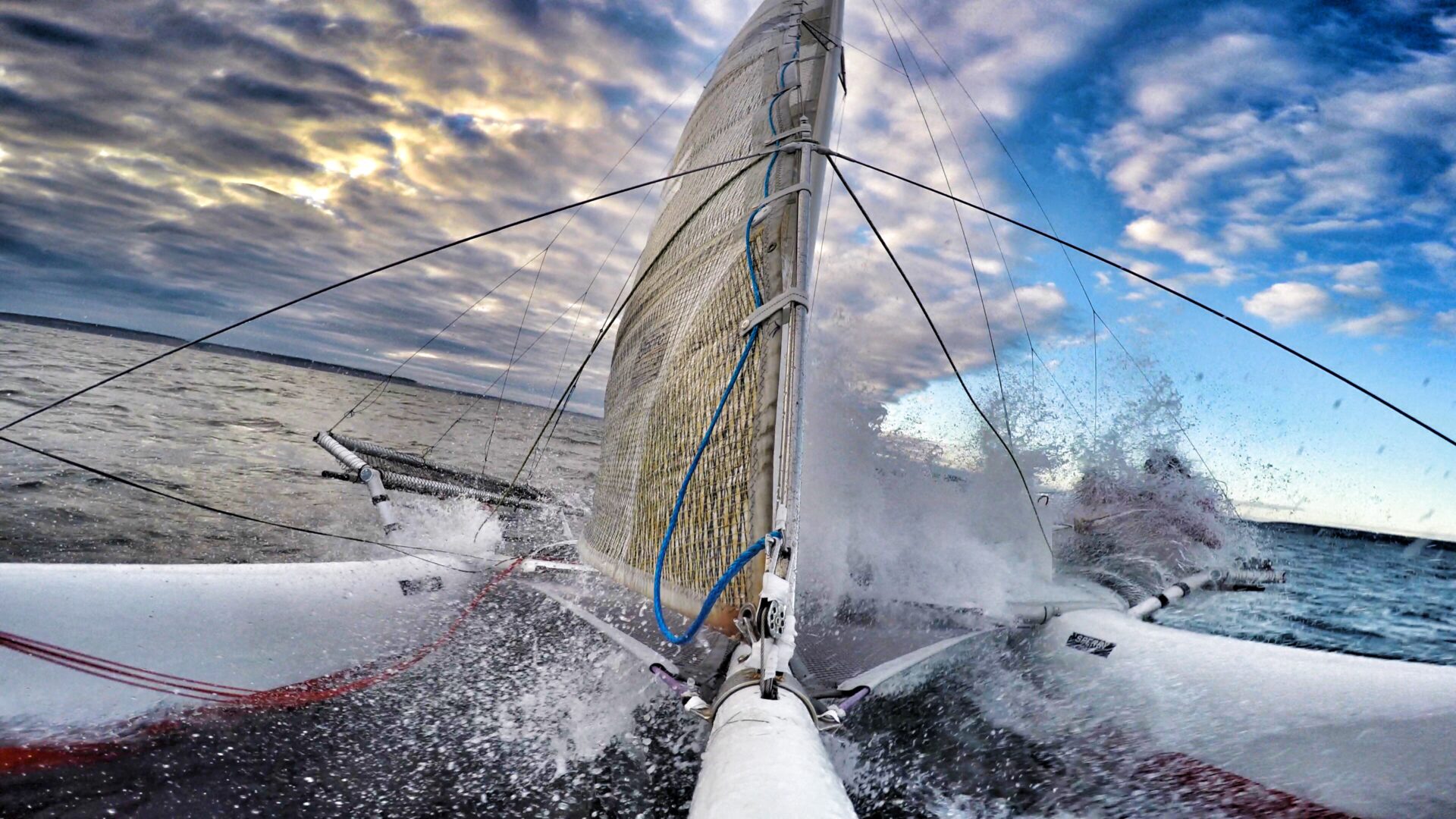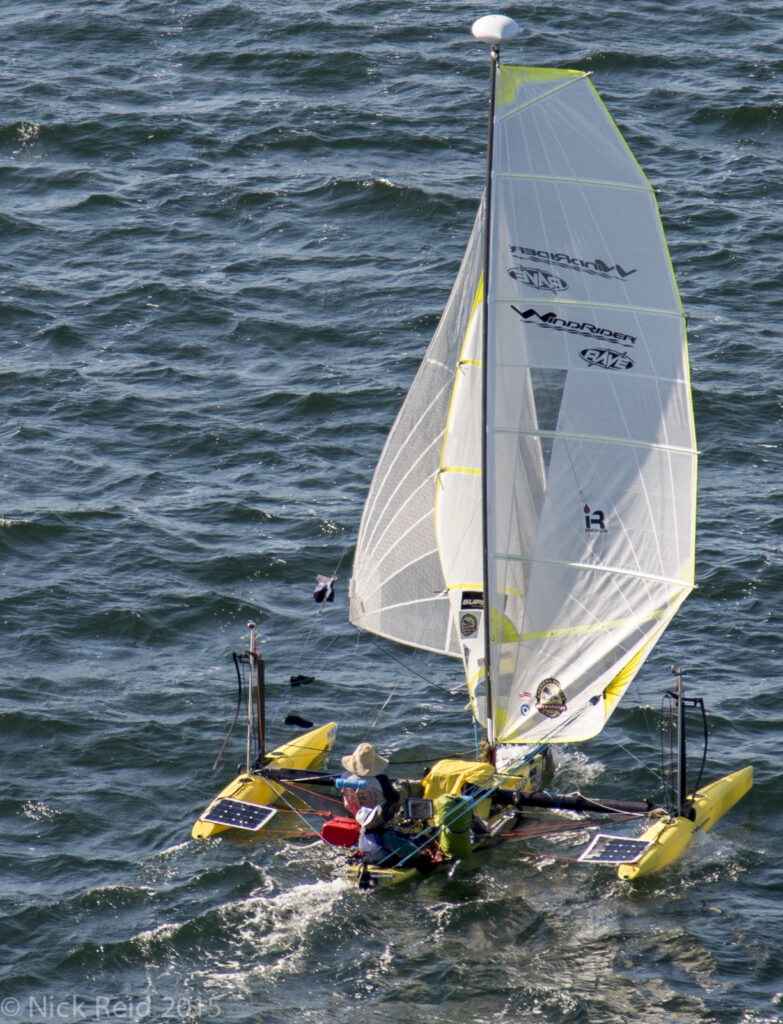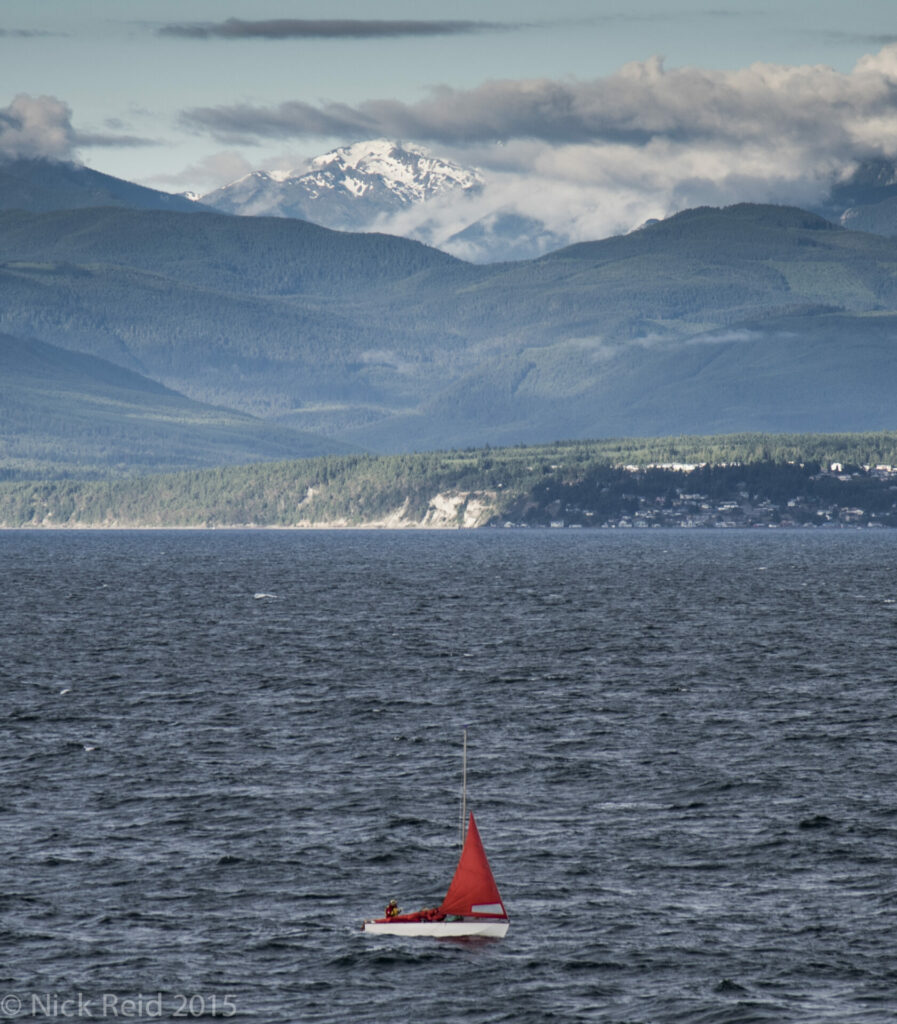THE WINNERS Five days, one hour, 55 minutes. That’s what it took for trimaran F-25c, Elsie Piddock, to sail the 700 miles from Victoria to Ketchikan and win the Race to Alaska, beating the second arrival, Team MOB Mentality’s Farrier 28, by about two days, 14 hours. Retired U.S. Coast Guard Captain Al Hughes and crew Graeme Esarey and Matt Steverson sailed “wickedly fast” around the clock to capture the $10,000 prize offered by the main sponsor, Port Townsend’s Northwest Maritime Center.
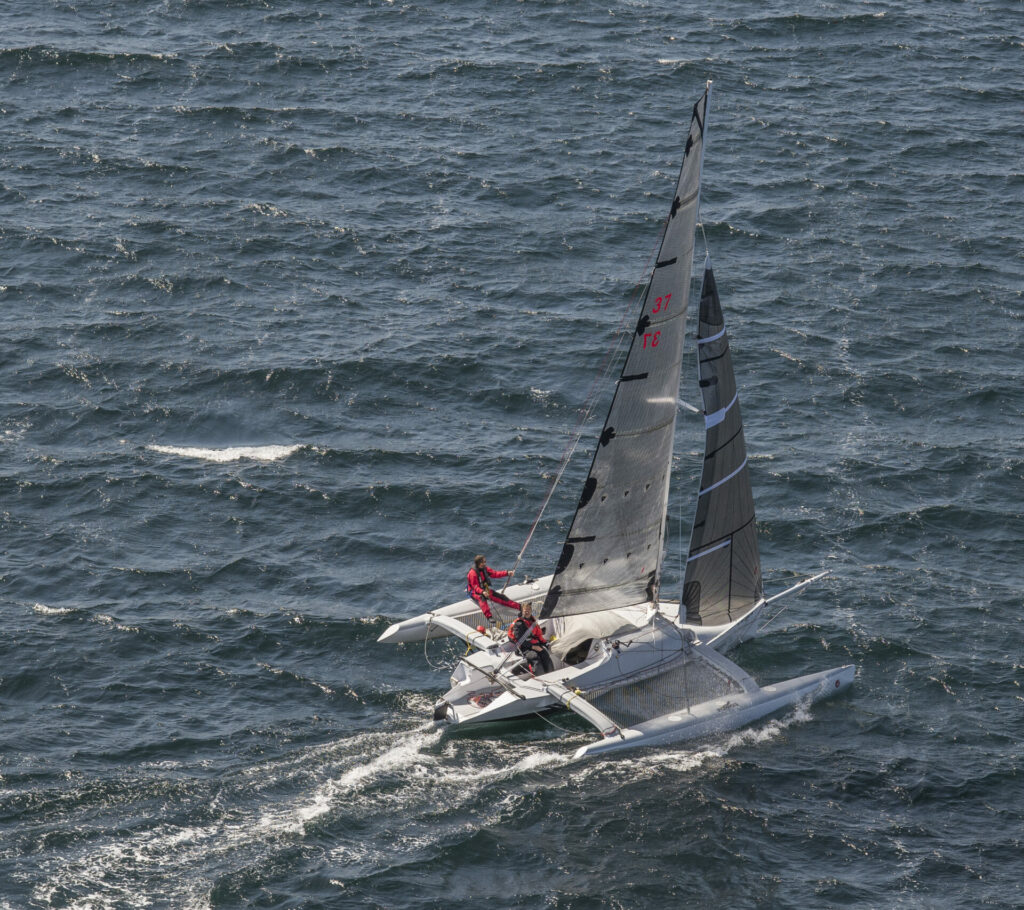
Early in the race, whose one major rule was “no engines,” it became clear the trimaran was on its way to beat competitors in other sailboats, rowboats, canoes and kayaks. “We’d only sailed Elsie for four hours before the race,” said Hughes. “We’d spent two months readying her.” The team borrowed the boat, re-rigged it, added simple oars and made it a “weight saving adventure.” Bare, it weighed 590 kg, loaded with three sailors and gear, it tipped the scales at 1,000 kg. Freeze-dried food, energy bars, dry dinners, one battery and a 15-watt solar panel for the VHF, plotter, cell and sat phones, a cruising guide, 65 litres of water, “semi-drysuits,” and an EPIRB were the staples and equipment aboard.
The trio had raced together before and each had significant sailing experience including three Transpacs, six Van Isles and five Hawaii-Seattle deliveries. Nearing Port Hardy—with 30-plus-knot winds on Johnstone Strait being the most challenging—they’d opened a big lead; by Bella Bella it was clear they’d be first unless they hit a log and were disabled—Hughes’ biggest fear. “We hit one our third night and were stopped abruptly. A chunk out of the fibreglass but no water intrusion. With three aboard, we had a huge advantage over solo or two-handed sailors. Two kept watch, the third slept so we sailed 24/7.”
Public enthusiasm greeted them everywhere. “People waved from balconies and boats. In Ketchikan, crowds came to the dock, tracked us down, a cruise ship blew its horn. Totally amazing. I’d do the race again next week, but I’m a nutcase.”
THE IDEA Northwest Maritime Center’s Executive Director Jake Beattie cooked up the Race to Alaska. “Every year the boating community gets older and the boats bigger,” he said. “I’d like to restart the conversation on what it takes to get on the water. How big a boat do you need to have an adventure?”
That question was answered quickly. A paddleboard was the smallest “boat” signing up, though an injury prevented the daredevil from setting off. Except for Team Golden Oldies, an 11.5-metre Crowther Shockwave and the 13.4-metre OC-6 outrigger canoe paddled by Team Soggy Beavers, the boats were small. Forty racers signed up for the race that had two legs: they left Port Townsend for Victoria on June 4; those continuing the trek to Ketchikan departed Victoria on June 7. Armchair sailors could follow racers’ progress on r2ak.com. Strong winds caused breakdowns and repairs on many boats. Several contestants withdrew quickly, including Colin Angus (PY June 2015), whose newly designed rowboat fell off its trailer. Some quit the race because their holiday time was up; others found the heavy winds too much for their boat’s mettle.
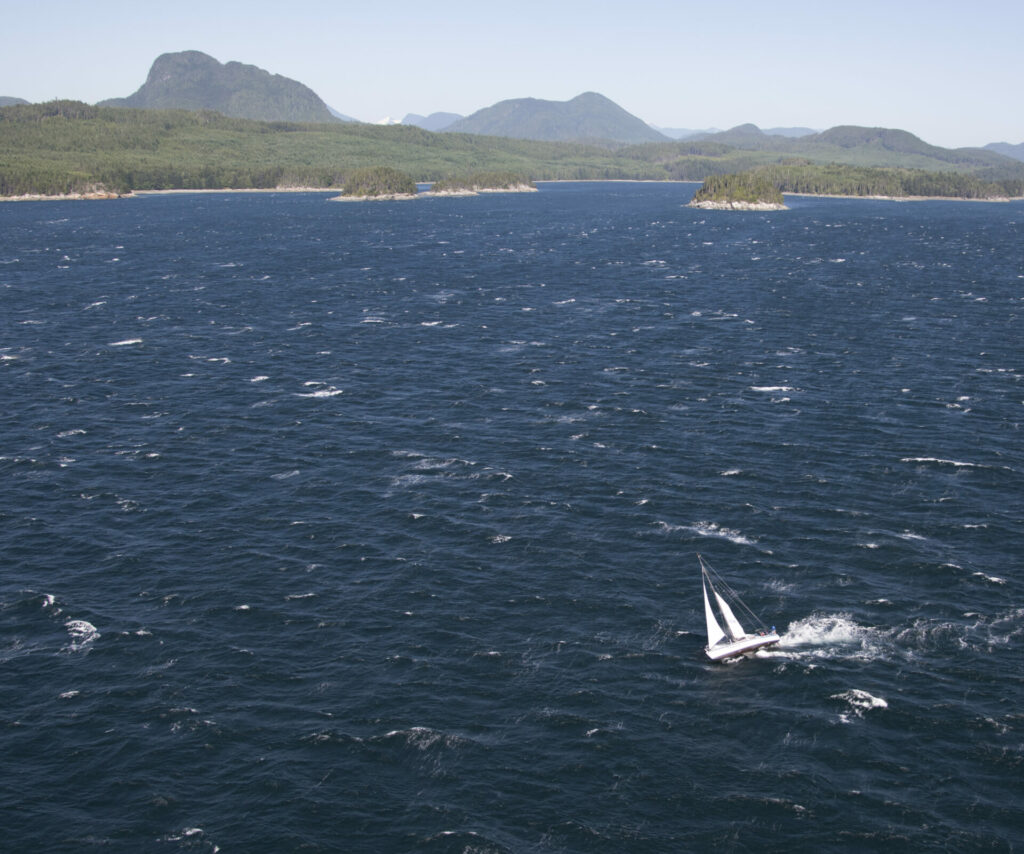
The Race had few stipulations: No engines aboard and no support. No limits on boat or crew size. Only three checkpoints. Safety items, including a SPOT (a real-time locator), VHF, lights, PDFs and sound signals were required. Sailboats needed one additional method of locomotion, like oars or pedal drives.
COMPETITORS The news about the race spread quickly and enticed participants from all over. I met several competitors, mostly male, mostly bearded and mostly young in Victoria Harbour. Here’s a sampling of adventurers who participated in the race.
Brothers Tripp and Chris Burd (Team Freeburd) heard about “the cool race,” drove from Boston, collected their ARC 22 in Syracuse, hauled it to Anacortes and spent weeks preparing their cat. It has no accommodation and they planned on sleeping on pads in drysuits. Sweeping oars were their “back-up engine.”
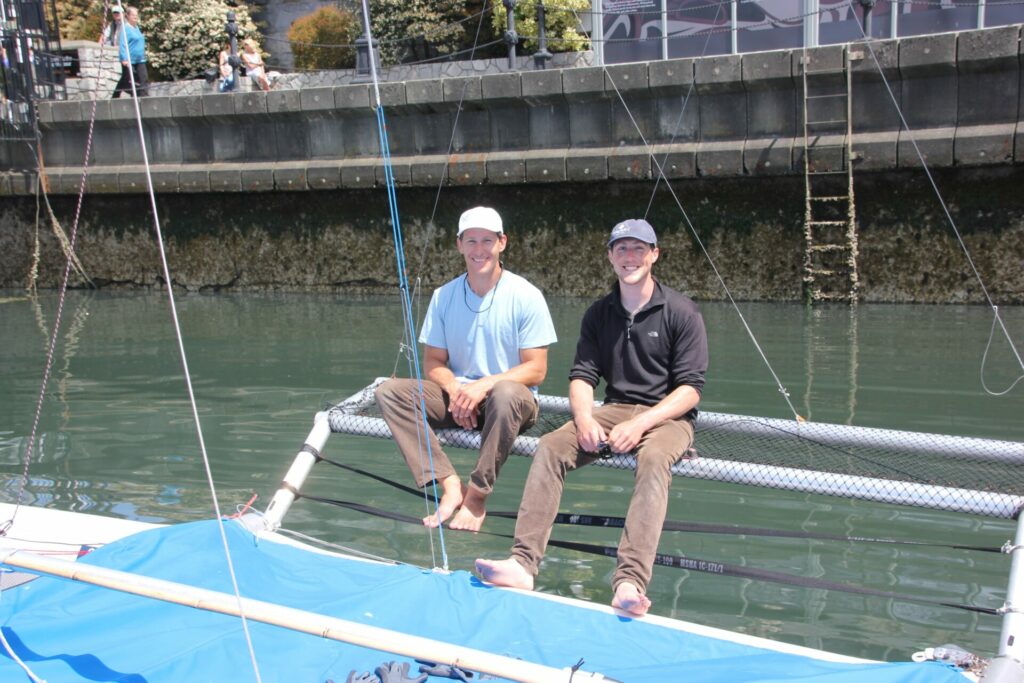
Could they win? “No one knows who’ll win this contest,” said Tripp, an experienced racer who’d attained a Sperry sponsorship. “There are many variables. Our 408 kg craft goes well upwind. We’ll sail 24/7 if weather permits. We love the adventure and it’s a great opportunity to experience this part of the world.” Coming in fourth (nine days, eight-and-a-half hours), Tripp said it’d been “a wild adventure with four days of non-stop intense racing, but with something breaking every day. It was brutally cold. Even with dry suits, clothing layers and wrapped in a tarp, it was too cold to sleep.” But the brothers delighted in the landscape’s spectacular size and scale, the remoteness, the whales and orcas. “It was the kind of experience we signed up for. But we wouldn’t have finished but for the kindness of strangers helping with repairs.”
Team Puffin’s Michael Dougherty, Sam Rayaschoti and James Bharram sailed a plywood cat. “It’s more a family cruising boat and we’ve had it for years. We don’t expect to race the boat that hard, don’t expect to win, but anticipate a really cool trip” (DNF). Team Superfriends, with Chris Adams, Colin Horton and Kit Vanderjagt joined forces to race a San Juan 21. They expected to sail around the clock—two on watch, one sleeping. They entered the race for “the adventure and to meet other people who’d do something crazy like this” (DNF).
Victoria-based submarine engineer Phil Wampold and UBC student counsellor Joanna Ludlow were readying their Nacra 570, a 5.67-metre catamaran. I inspected Team Mau’s tiny craft, their petite nylon fold-down dodger on the trampoline, the lack of bedding, and shivered. “We have many layers of merino wool to keep warm,” said Joanna. “We’d like to win and can easily go 12 knots,” added Phil. “Besides, we’re young and able to endure misery, but our first goal is to get up there safely.” And misery it was, Phil told me after the race. “Johnstone winds were so fierce we hunkered down on Quadra,” he said. “Yes, it was very cold. We used the pedal drive in part to generate heat. But it was worth it. We met awesome people. We didn’t break the boat. It wasn’t really dangerous as long as the captain decides what is safe. Hence the stay on Quadra. We are thrilled to have completed the race. For our boat, we did extremely well.” (Eighth, 11 days, 20.5 hours).
Team Real Things’ Todd Bryan, Ben Ellenberger and Boris Elves hail from Santa Barbara and were installing sturdier oarlock supports on their kit-built L7. “It’s a great story,” said Todd. “We needed new oarlock components and Trotac, the local marine store, checked all over and found parts in Coombs, had them couriered, and then a foundry made us new brackets. Wonderful help!” Todd was in the race on a friend’s emailed dare: “Sack up for this one,” it read. “The race’s idea was captivating,” he said, “and we’re damn well going to try to win. That said, we’re prudent mariners” (DNF).
Some boats revealed ingenious design. Team Sea Runners’ Thomas Nielsen and Scott Veirs had broadened their Wharram Hitia 17’s narrow catamaran hulls so a body could sleep inside, added hatches to stow supplies and installed an ingenious swing-out jetboil stove. “It’s a Polynesian crab claw with a lateen sail, an upside-down triangle,” explained Thomas. “We have a pedal drive as backup and 10 days worth of freeze-dried food.” The team ran into trouble on Johnstone Strait. “Winds in the high thirties snapped the upper spar,” said Thomas. “In Telegraph Cove, we restitched the sail by hand, stuck it together with superglue, spray glue and double-sided tape. But we quit because Scott had to get back to work. Nevertheless, it was one heck of an adventure.”
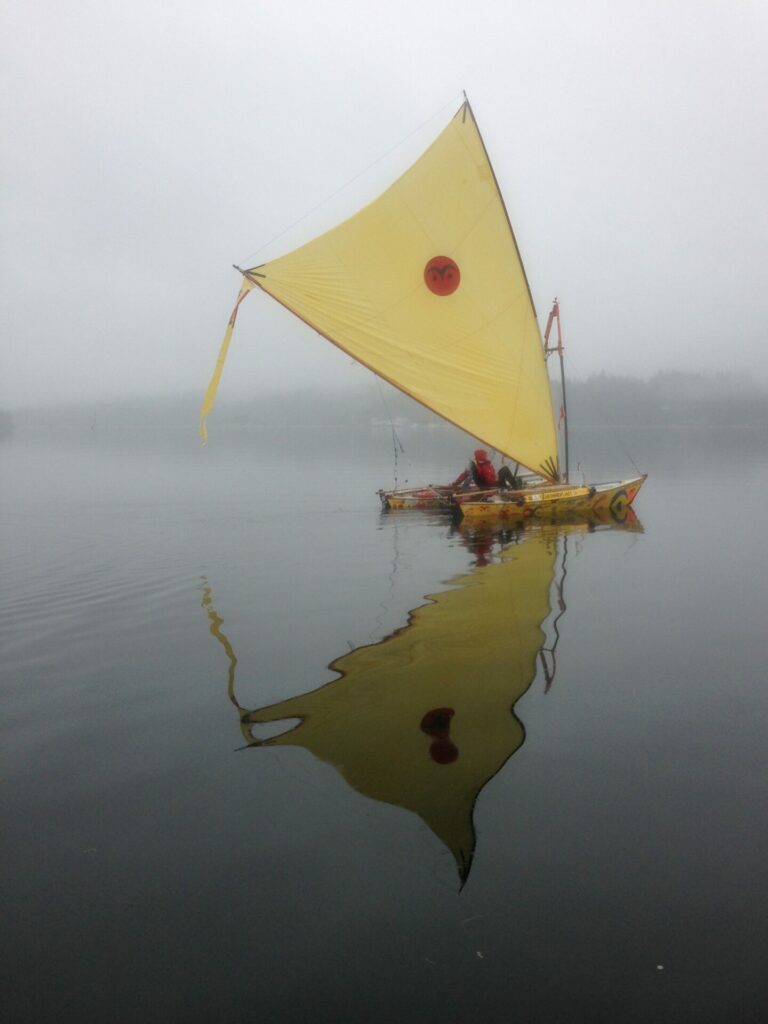
A broken mast ended the race for Team Bröderno (Swedish for brothers), brawny Lars and Nels Strandberg who bought their Corsair 24 for the race. They’d never sailed before. Nels is a homebuilder, Lars a crab fisherman. “We are young and strong and my brother asked me to do this,” Nels told me. “I said yes.” The brothers experienced a gale on Georgia Strait and suffered haystack waves. “After two days of no sleep, we tacked into a little cove and had food, sleep, whiskey.” Their next windy bout ripped the jib. “We didn’t know how to reef it and almost capsized,” said Nels. It forced a stop in Sayward. Hungry and hearing about a hamburger joint, they started walking. An RCMP officer stopped and queried them, then offered a ride.
They set off again when winds on Johnstone Strait moderated. “We were hooting and hollering.” But the winds rose again, and overpowered, the catamaran’s mast snapped at 02:00. “We used the pedal drive, called the Coast Guard after 90 minutes. An RCMP boat came out in the gale-force winds and towed us in. The same officer was aboard!” And he rescued them again by driving the brothers to Campbell River’s airport. “He was such a neat, humble guy, who said he liked helping out. Unbelievable, such generosity!”
Would the Strandbergs race again? “Yesterday,” said Nels, “I’d have said no. Today? Yeah.”
Team Soggy Beavers competed in a 13.4-metre canoe with two stabilizers and two sails and were led by two more brothers, Graham and Russell Henry. They grew up to love human-powered endeavours, as their father, Brian Henry, owns Victoria’s Ocean Sports and they’ve paddled since childhood. Their crew—Tanner Ockenden, MacKenzie Punter, Nick Rampen and Ryan Schissler—and the Henrys had planned to paddle around the clock, but they ended up paddling 21 hours a day, crashing on a beach, making a fire and sleeping. “We staggered the paddling,” said Graham, “and ate energy bars, cheese and sausage. We all lost five pounds.” “They thought they could win the race if winds were five knots or less, but Johnstone Strait foiled that plan with its 35-knot headwinds. Their sails weren’t effective in strong weather conditions.
To stay energized and rhythmic, they used eight-by-three-inch solar panels to charge iPods and speakers. “We played dance music.” Their toilet was “built in: overboard.” Their GPS broke after Johnstone Strait and they lacked charts for Alaska. “No problem,” said Graham. “We’re used to finding our way, get along well and worked frigging hard. We feel super accomplished and have done paddling proud.”
Asked if he thought the race too risky, Graham was adamant. “It’s not irresponsible at all. It’s a question of personal judgment. We know what we’re in for and should be allowed to take risks. It was humbling and we learned a lot but I certainly hope it will run again.” (Seventh, 11 days, five hours).
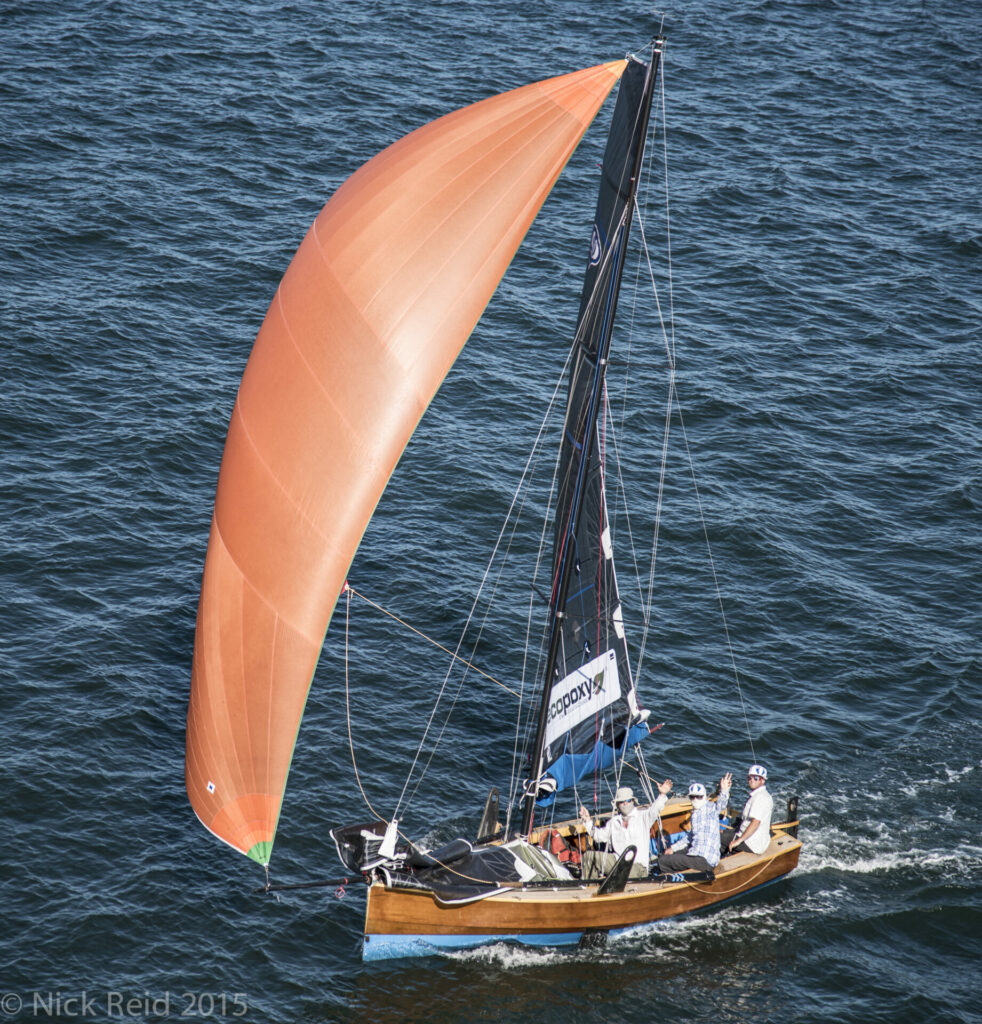
Just before Elsie Piddock reached Ketchikan, I emailed trimaran designer Ian Farrier in New Zealand, hoping he was monitoring R2AK. Indeed he was. “Very happy with the result, which was due to a great effort by Al Hughes and the crew of Elsie Piddock…!” Farrier wrote with glee. “Multihull owners remain just a little irritated with the still frequent claims they don’t go well to weather, but I think this race has demolished the old fallacy again. After five days of sailing, and in mostly tough conditions right on the nose, the F-25C was well over 100 miles in front of a 25 percent larger monohull” (final tally for the F-25 over the Hobie 33 was 62 hours).
Jake Beattie is delighted with the results of his brainchild. “The high level of interest by racers and sponsors amazed me,” he said from Ketchikan, where he was greeting the last of the racers in late June. “People all along the racetrack offered hospitality and brought food and help to the dock or beach. The race exceeded my expectations, both in numbers and in enthusiasm. Twenty-nine racers started, ten bowed out and 15 arrived within the timeframe. I’m pleased.
With the 2015 race now in the books, organizers are already looking ahead to 2016, with the race set to start at 06:00 on June 23.
